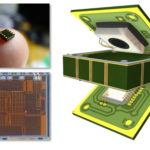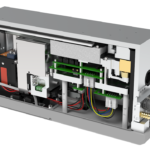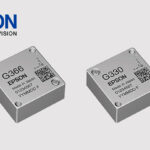ASIA ELECTRONICS INDUSTRYYOUR WINDOW TO SMART MANUFACTURING
ST Unveils New IR Sensor for Building Automation
Semiconductor company STMicroelectronics (ST) is launching a novel human-presence and -motion detector. Accordingly, this will be critical in enhancing security systems, home-automation equipment, and IoT devices that use passive infrared (PIR) sensing.
The STHS34PF80 sensor contains thermal transistors that can detect stationary objects. Unlike conventional PIR detectors that require the detected object to be moving to produce a measurable response from the sensor. On top of that, while PIRs need a Fresnel lens to sense moving objects, ST’s novel detector allows simpler, lens-free construction.

“Today’s smart homes, smart buildings, and IoT applications need accurate presence detection to improve control of systems such as lighting, heating, security, and safety monitoring for a sustainable future,” said Simone Ferri, General Manager, AMS MEMS Sub-Group, STMicroelectronics.
In addition, Ferri said the new STHS34PF80 is an economical, ultra-low-power sensor that lets building automation operate consistently whether detected occupants are moving or not. Furthermore, Ferri said the technology is a combination of CMOS chip fabrication, silicon micromachining, and low-voltage circuit design capabilities.
High Performance Features, Functions
Embedding a smart algorithm for presence and motion detection, the STHS34PF80 targets alarms and security systems. In addition, it also suits home automation, smart lighting, IoT devices, smart lockers, and smart wall pads. Its lens-free range of four meters and 80° field of view cover a large area in front of the sensor.
With operating current of 10µA, the STHS34PF80 comes with a power consumption less than a conventional PIR. Furthermore, the compact 3.2mm x 4.2mm x 1.455mm surface-mount package makes it suitable for automated high-speed assembly. The sensor has high resistance to unwanted effects of direct lighting and high immunity to electromagnetic interference (EMI).
The STEVAL-MKI231KA simplifies experimenting with the STHS34PF80. Plugging into the X-NUCLEO-IKS01A3 or the STEVAL-MKI109V3 lets developers use ST’s Unico-GUI graphical interface to configure the IR sensor and take measurements within a simplified workflow. Drivers for the STHS34PF80 are available on GitHub.
In addition, a ready-to-use library for compensating and detecting presence of people or objects is available in theX-CUBE-MEMS1software package. Users can quickly start running simple applications, taking advantage of the STHS34PF80 and testing the results to begin creating an application.
Further Technical Information
The STHS34PF80 contains thermal MOSFETs (TMOS) sensitive to the heating effects of infrared radiation incident on their gates. On top of this, it also has digital readout circuitry integrated efficiently on the same chip using ST’s mature and reliable silicon-on-insulator (SOI) CMOS technology. The SOI’s architecture facilitates micromachining with ST’s proven MEMS processes to thermally isolate the TMOS for accurate temperature sensing.




